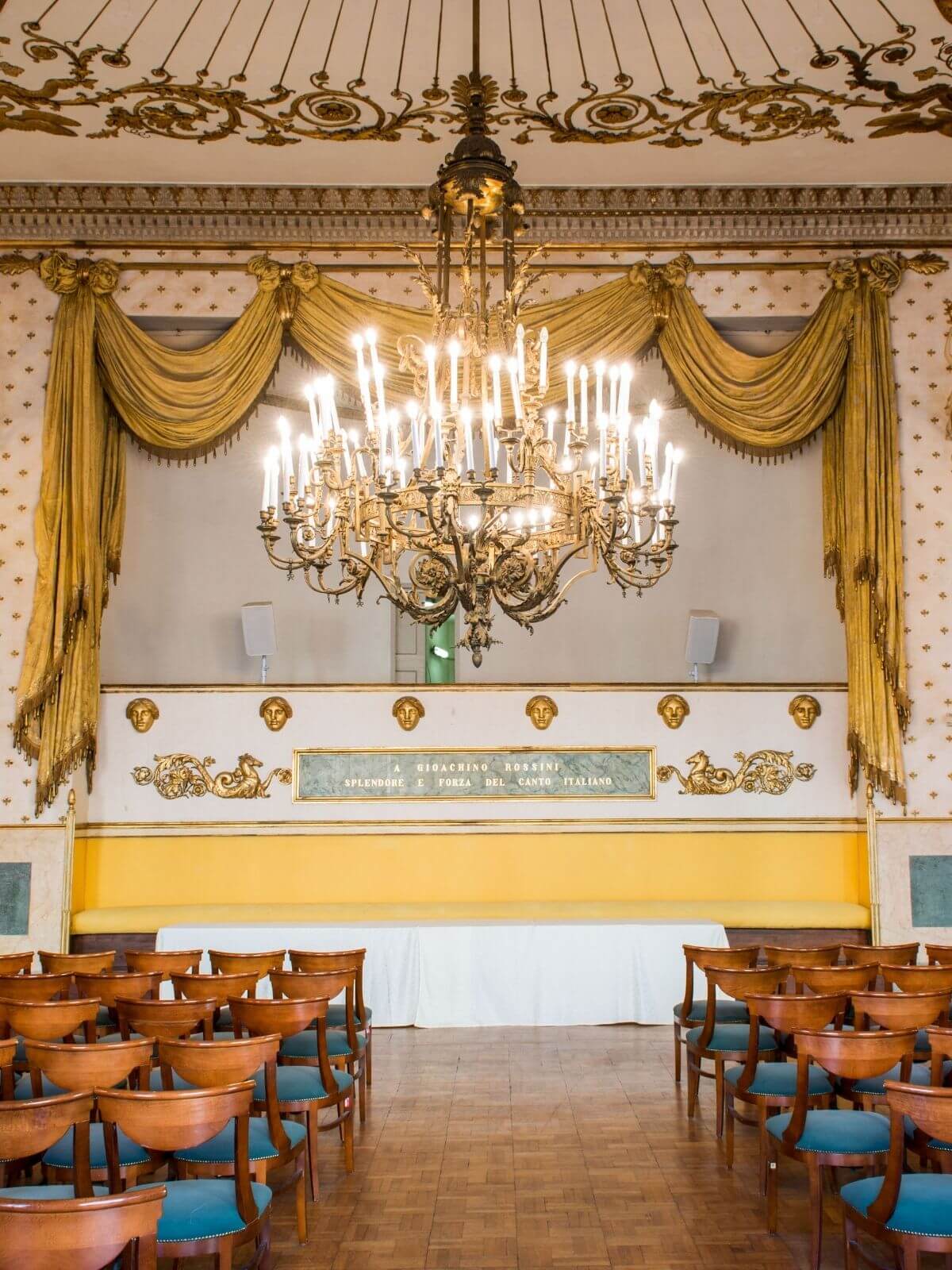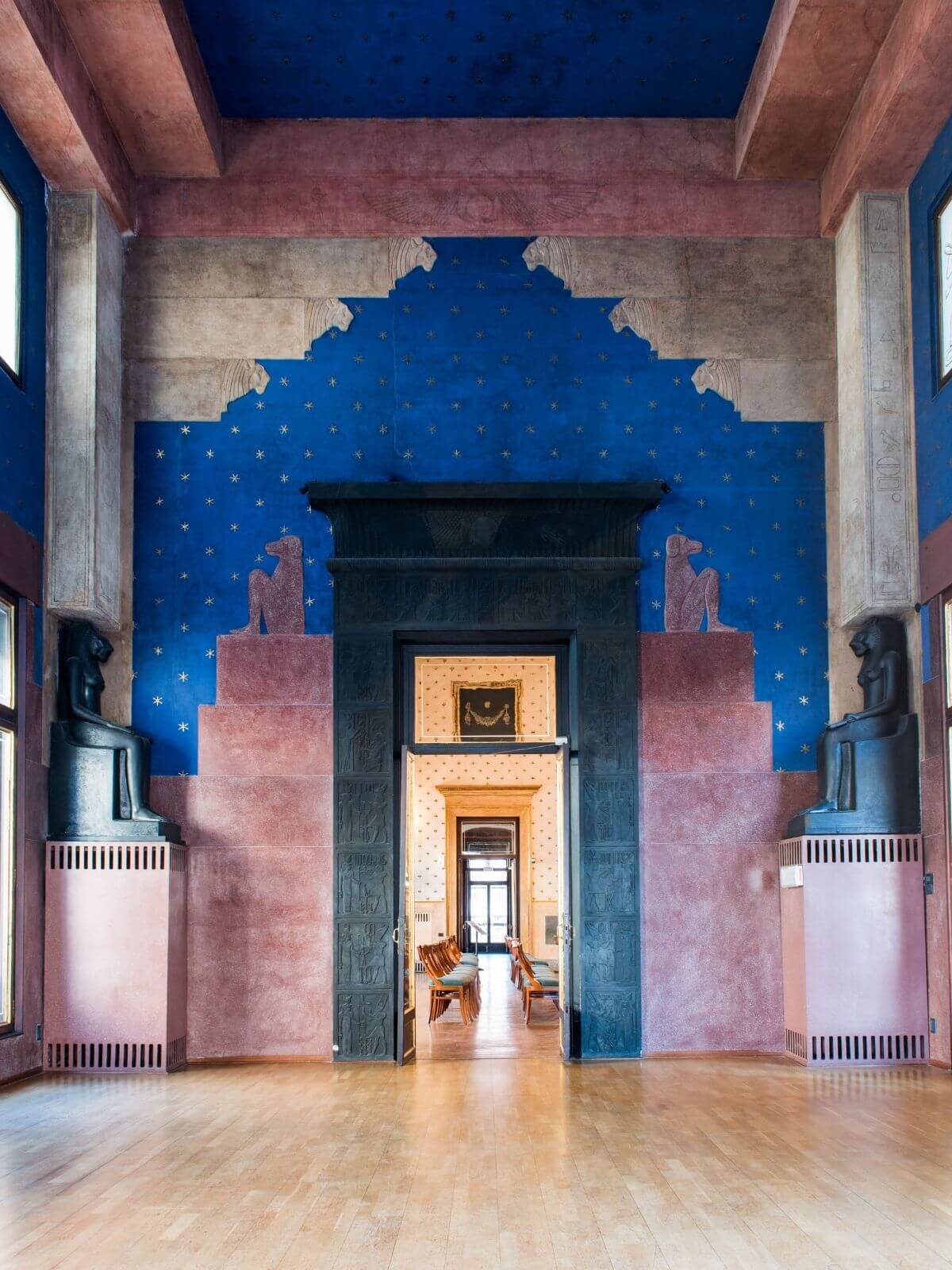The Piano Nobile
The Piano Nobile was inaugurated in 1842 on the occasion of the 4th Congress of Italian Scientists.
The rooms on this floor are all located around the main hall. A succession of rooms decorated and furnished according to a particular theme and all paying homage to past styles. Initially designed as a more intimate meeting place for artists and writers, it is nowadays the ideal venue for wedding ceremonies, conferences, meetings and events.

The Rossini Room
The Rossini Room, also known as the Napoleonic Room, is undoubtedly the main room of the Piano Nobile. A room that celebrates the themes of music and glory, and a place where time seems to stand still. A large room whose stuccoes, curtains and various adornments will undoubtedly take guests traveling back in time.
Bright and spacious, it makes for a great setting for presentations, shows and conferences. Without forgetting its original function: a ballroom for balls and gala dinners.
| Length | Height | Depth | Sq.Mt |
| 12.31 | 8.14 | 14.91 | 183.5 |

The Egyptian Room
A star-spangled blue sky. The Egyptian Room – with its statues, sphinxes and cinerary urns – is undoubtedly one of the rooms of maximum artistic value, whilst it is also connected to the Corinthian and Egyptian Loggias.
In summer, guests can also make the most of the terrace for events and refreshments.
| Lenght | Height | Depth | Sq.Mt |
| 7.80 | 8,14 | 6.85 | 53.50 |

Other rooms of the Piano Nobile
Other rooms include: the Etruscan Room, the Greek Room, the Moorish Room, the Roman Room, the Renaissance Room and the Gothic Room.
The Museum of the Risorgimento and Contemporary Age
Next to the prestigious Piano Nobile in the Pedrocchi building is the Museum of the Risorgimento and Contemporary Age, which documents the key events and protagonists of Paduan and national history, spanning as many as 150 years, from the fall of the Venetian Republic (1797) to the proclamation of the Italian Constitution on 1 January 1948.
